Related Research Articles
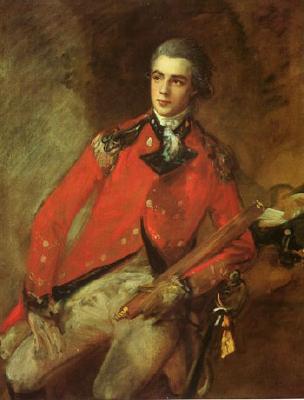
General William Schaw Cathcart, 1st Earl Cathcart was a British soldier and diplomat.

Field Marshal Sir John Fox Burgoyne, 1st Baronet, was a British Army officer. After taking part in the Siege of Malta during the French Revolutionary Wars, he saw action under Sir John Moore and then under the Duke of Wellington in numerous battles of the Peninsular War, including the Siege of Badajoz and the Battle of Vitoria. He served under Sir Edward Pakenham as chief engineer during the War of 1812. He went on to act as official advisor to Lord Raglan during the Crimean War advocating the Bay of Kalamita as the point of disembarkation for allied forces and recommending a Siege of Sevastopol from the south side rather than a coup de main, so consigning the allied forces to a winter in the field in 1854.

Henry Burbeck was a senior officer of the United States Army who served as the Commandant of the Corps of Artillerists and Engineers from 1798 to 1802.

Walter King Wilson Jr., was an officer of the United States Army with the rank of lieutenant general. He is most noted as a Chief of Engineers during 1961–65. He was the son of Major General Walter K. Wilson Sr.

John Harris was the sixth Commandant of the Marine Corps. He served in the Marine Corps for over 50 years, attaining the rank of colonel.

General Charles O'Hara was a British Army officer who served in the Seven Years' War, the American War of Independence, and the French Revolutionary War and later served as governor of Gibraltar. He served with distinction during the American War of Independence, commanding a brigade of Foot Guards as part of the army of Charles Cornwallis and was wounded during the Battle of Guilford Courthouse. He offered the British surrender during the siege of Yorktown on behalf of his superior Charles Cornwallis and is depicted in the eponymous painting by John Trumbull. During his career O'Hara personally surrendered to both George Washington and Napoleon Bonaparte.

Yefim Ignatyevich Chaplits/Tschaplitz, born Eufemiusz Czaplic, was a Polish military commander in the service of the Russian Empire.
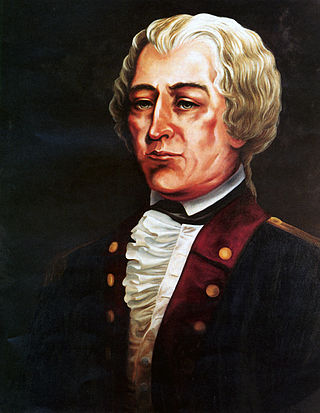
John Doughty was an American military officer who briefly served as the senior officer of the United States Army in 1784. Holding the rank of major at the time, he bears the distinction of being the lowest ranked individual ever to serve as the senior most United States Army officer.

Louis de Tousard (1749–1817) was a French artillerist who served in the American Continental Army under La Fayette, and later was given a US commission. Tousard wrote two very influential books: one was a proposal for a school for officers that became the blueprint for West Point, and the other was a manual for artillery officers that became standard in the young army.

During the American Revolutionary War, the New York Provincial Company of Artillery was created by the New York Provincial Congress in 1776 to defend New York City from British attack.

Charles Laurie McCawley was an American officer who served in the United States Marine Corps during the Spanish–American War and World War I. He who was one of only 23 Marine Corps officers awarded the Marine Corps Brevet Medal for bravery.
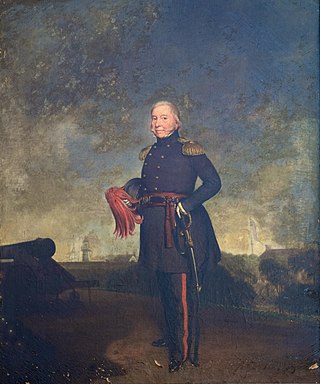
John Baptiste de Barth Walbach was an Alsatian baron who fought in the French Revolutionary Wars, and was one of the few foreign-born senior officers in the United States Army prior to the American Civil War, attaining the rank of brevet brigadier general by brevet.
General John Despard was an Irish-born soldier who had a long and distinguished career in the British Army and as a colonial administrator. He was the brother of Edward Despard, also a soldier, who was executed in 1803 for his part in the Despard Plot.
Colonel Commandant Sir Richard Williams (1764–1839) was a career British officer of the Royal Marines active during the American Revolutionary War, the French Revolutionary Wars, the Napoleonic Wars, and the War of 1812.

Fort Defiance was a fort that existed from 1794 to after 1865 on Fort Point in Gloucester, Massachusetts. The location protecting the inner harbor was also called Watch House Point.
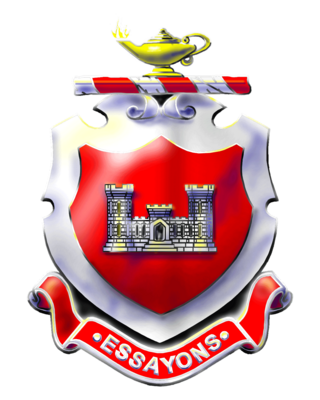
The United States Army Engineer School (USAES) is located at Fort Leonard Wood, Missouri. It was founded as a School of Engineering by General Headquarters Orders, Valley Forge on 9 June 1778. The U.S. Army Engineer School provides training that develops a wide variety of engineering skills including: combat engineer, bridging, construction, geospatial, topography, diving, and firefighting.

General Sir Henry Tucker Montresor was a general in the British Army.
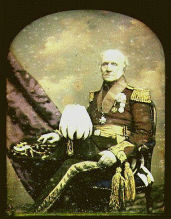
Lt-General Sir Henry Goldfinch was an officer in the Royal Engineers who served during the Peninsular War of 1807 to 1814, ending his career as one of the colonels commandant of the Corps of Royal Engineers. He was appointed a Companion of the Order of the Bath (CB) in 1815 and a Knight Commander of the Order of the Bath (KCB) in 1852.
In the early years of the Republic, the United States Army experimented with a number of different artillery formations. For a time, the Artillery Branch and Engineer Branch were combined. Unit designations did not yet contain the terms "Field Artillery" or "Coast Artillery," although units so designated, as well those of the air defense artillery, would eventually trace their lineage and honors to some of the early formations.
Moses Porter was a general in the United States Army during the War of 1812. His career lasted for over 40 years and he is one of the few officers who served in both the American Revolution and the War of 1812.
References
This article contains public domain text from "Lieutenant Colonel Stephen Rochefontaine". Portraits and Profiles of Chief Engineers. Archived from the original on April 4, 2005. Retrieved May 9, 2005.